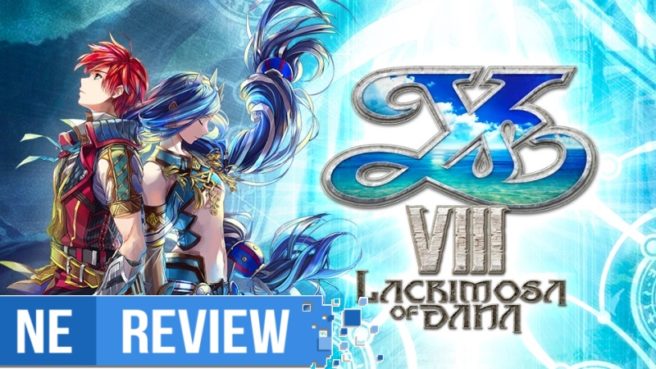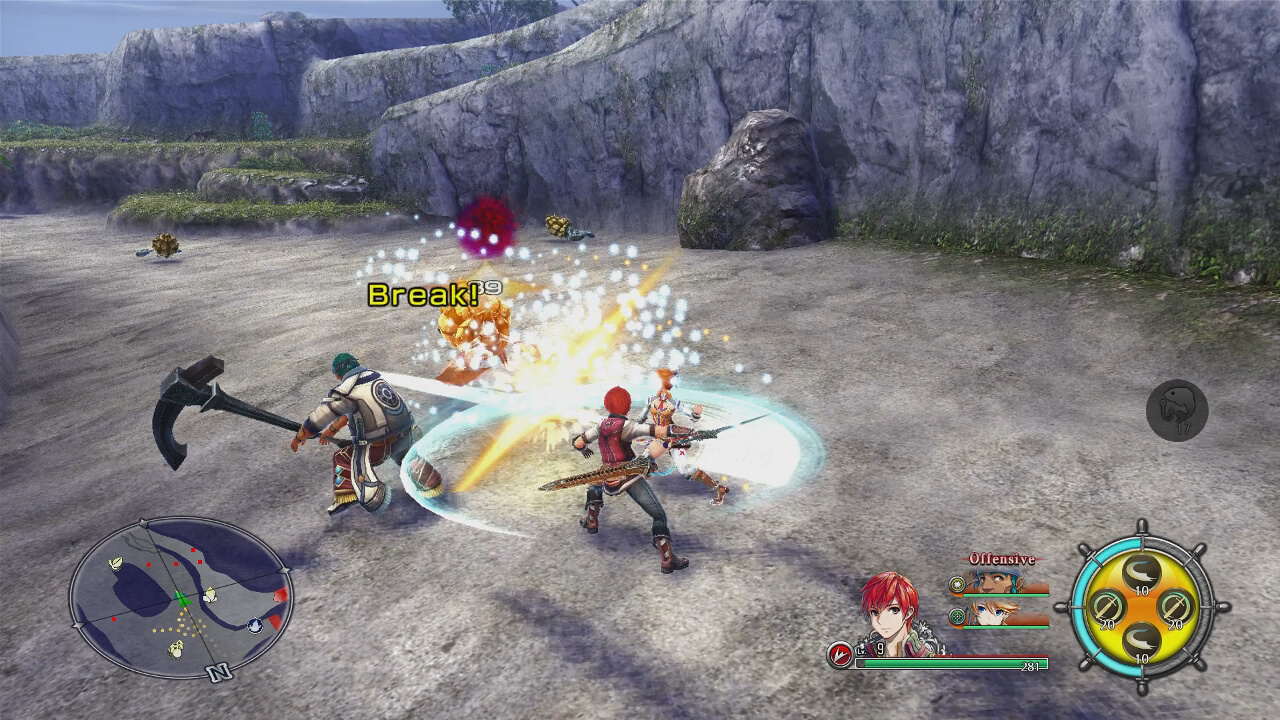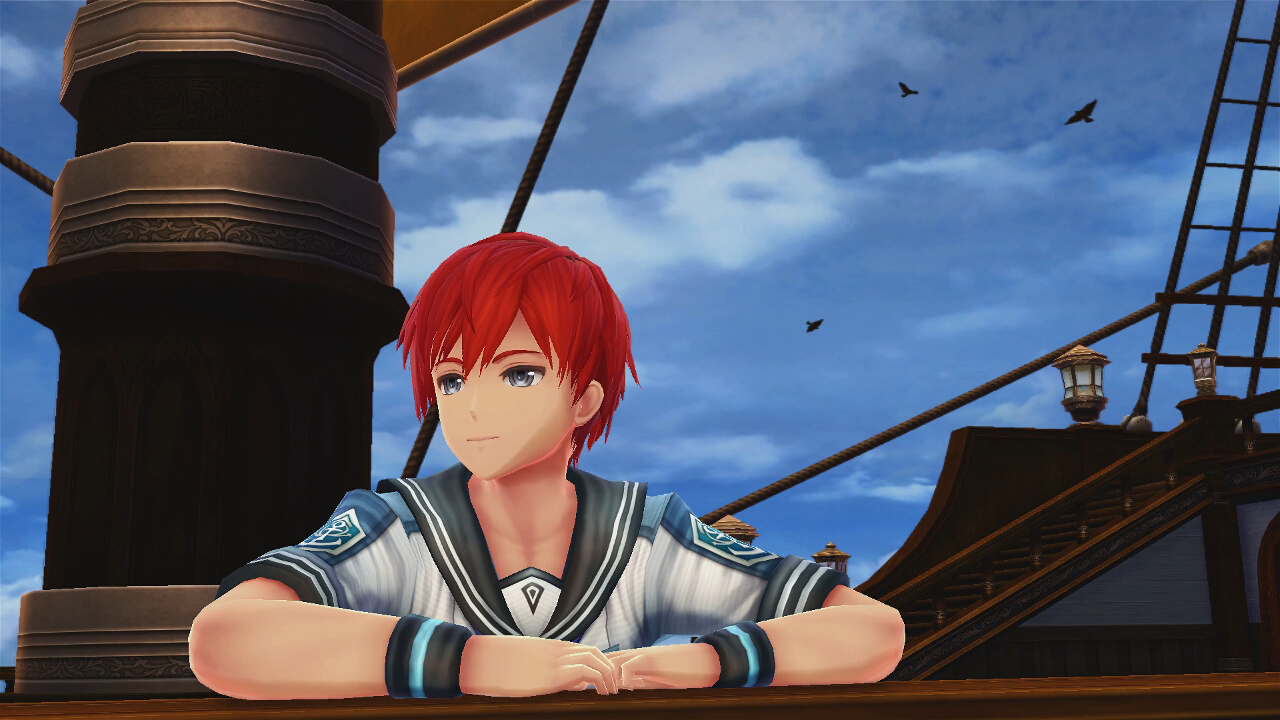System: Switch
Release date: June 26, 2018
Developer: Falcom
Publisher: NIS America
Nihon Falcom, or just Falcom as they’re more commonly known today, is a Japanese video game developer known for producing some of the earliest JRPGs alongside rival companies previously known as Square and Enix. Although Falcom has a history of developing their many titles for PC, titles will often get ported onto consoles after the fact for a broader audience to experience. For a very long time, Falcom was mainly focusing on the PlayStation family of consoles, but with the incredible success of Switch, Nintendo is getting a port of Falcom’s latest entry in the Ys series – Ys VIII: The Lacrimosa of Dana. Falcom as a company has a lot of history under its belt, but how does Ys VIII live up to its hearty legacy?
The Ys series is an action JRPG franchise that centers around Adol Christin, a young man who travels the world as an adventurer. Alongside his companion Dogi, he explores the fictional world of Ys and the many different continents that shape it in search of his next adventure. One of the great things about Ys VIII is that even though this is a series with an absolutely incredible amount of world-building and lore, you don’t really need to be familiar with it going into Ys VIII. The games in the Ys series are mostly self-contained stories centered around Adol and Dogi, which is exactly the case for Ys VIII as well.
Ys VIII begins with Adol and Dogi aboard a ship called the Lombardia setting sail on the Gaete Sea. After getting familiar with the ship’s crew and its passengers, unforeseen circumstances cause the ship to capsize. Adol regains consciousness as a castaway on an expansive and deserted island, quickly discovering that many of the passengers aboard the Lombardia have also washed ashore. Adol and the castaways decide to band together and begin charting the island in order to rescue any other survivors who may have washed ashore and build a functioning ship for their escape. Along the way, Adol and company soon discover the deep and unexpected history of the island, involving creatures long thought to be extinct.
On the surface, Ys VIII’s story may seem fairly typical to some JRPG veterans. However, the structure of the game’s narrative gives an incredibly satisfying feeling of progression throughout. One of the main elements of the story comes from the deserted island that Adol finds himself on. As the island is uncharted and the castaways that you’re searching for are scattered around the various parts of the world, there is always a point or section of the map to work towards. As such, there is always some sort of meaningful reward given once that point is reached, whether it be new sidequests opening up, new castaways to be found, or story progression. Because the island that Adol and crew end up on is deserted and uncharted, you must eventually chart out the entire map, all the while fulfilling sidequests, recruiting new characters and exploring optional and story-related dungeons. Along with the pacing of the game in general and the way sidequests are handled, all of these elements combine to make the player feel like they’re never stagnating or slowing down. This is no easy feat, as Ys VIII will probably last you anywhere from 30-50 hours depending on the amount of sidequesting and exploring you feel up to.
The gameplay of Ys VIII is typical of most action JRPGs. The player controls Adol, with party members following behind and controlled by AI. The easiest comparison to make of the gameplay style would be to the Xenoblade Chronicles series of games, except Ys VIII is much faster and more streamlined. Adol moves around fully realized, segmented open-world with different regions or dungeons being separated by brief loading screens. For basic movement options, Adol can sprint, jump around obstacles and platforms, and perform a dodge-roll to evade enemies. Combat in Ys VIII is fairly simple at face value, yet can get surprisingly deep. Each character has one of three damage types: slash, pierce, and strike. Various enemies and bosses have weaknesses to certain damage types, and once attacked repeatedly with that damage type it causes a “break” effect which stuns enemies leaving them vulnerable. Each character has a basic combo of attacks that can be performed by hitting the A button in succession. Additionally, each character has four skill slots where they can attach and use any skills that they learn at the cost of SP. Skills vary in many ways, from its area of affect, to status conditions inflicted, and character buffs. Skills also level up the more you use them and land successful kills, giving incentive to utilizing them often in combat.


